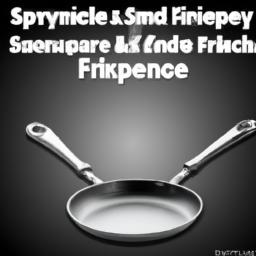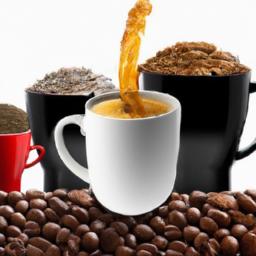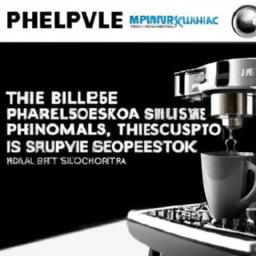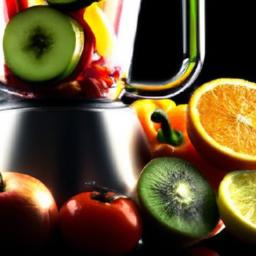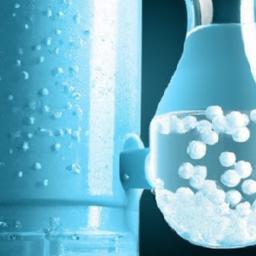French Skillet vs Frying Pan: Understanding Their Unique Roles in Your Kitchen
Unveiling the Distinctive Characteristics of French Skillets and Frying Pans
Though at first glance the French skillet and frying pan might seem interchangeable, they each bring unique features that influence their performance in the kitchen. The French skillet is defined by its high, straight-sided walls and a broad flat base, ideal for recipes involving sauces or gentle tossing. Conversely, the frying pan typically features slanted sides and a shallower depth, designed for rapid heat exposure and easy flipping.
| Attribute | French Skillet | Frying Pan |
|---|---|---|
| Side Design | Straight and tall | Sloped and low |
| Best Cooking Tasks | Sautéing, braising, sauces | Searing, frying, flipping |
| Common Materials | Cast iron, stainless steel | Non-stick, stainless steel |
Choosing the correct pan depends on the cooking technique you’re aiming for-a skillet offers containment and even cooking for simmered dishes, while the frying pan excels at providing quick heat and easy manipulation of food.
How Pan Shape and Dimensions Influence Your Culinary Approach
The geometry of your cookware significantly impacts cooking technique. French skillets boast higher sidewalls with a gentle slope, promoting effortless stirring and blending of ingredients without spillage. Frying pans, being wider with more angled sides, maximize direct contact with heat, crucial for achieving superior browning and crisp textures.
| Feature | French Skillet | Frying Pan |
|---|---|---|
| Side Height | High and straight | Low and flared |
| Heat Exposure | Moderate surface area | Maximized surface area |
| Tossing Ease | Facilitated by side height | Less intuitive due to slope |
The pan’s size also matters; ample surface area prevents overcrowding, which can cause food to steam rather than sear. Selecting the right width, aligned with your stovetop dimensions and cooking preferences, ensures optimal results-whether it’s quick frying or slow simmering.
Material Matters: Selecting Pans by Composition for Optimal Results
The choice of material can make or break your cooking experience. French skillets often feature cast iron or heavy-duty stainless steel, prized for their excellent heat retention and durability. Cast iron, for example, excels in maintaining a steady temperature, perfect for searing meats and slow-cooked stews.
Frying pans are commonly forged from materials like aluminum with non-stick coatings or stainless steel. Aluminum pans heat quickly but require cautious use to prevent warping, while non-stick surfaces aid in low-fat cooking and simple cleanup but generally don’t tolerate high heats.
| Material | Ideal Use | Maintenance Tips |
|---|---|---|
| Cast Iron | High-heat searing, slow cooking | Season regularly; hand wash only |
| Stainless Steel | Browning, deglazing | Dishwasher safe; preheat to avoid sticking |
| Non-stick | Low-fat cooking, delicate foods | Use silicone utensils; avoid harsh scrubbing |
Choosing the right pan material aligns with the types of dishes you prepare frequently, enhancing both flavor and cooking ease.
Managing Heat: Which Pan Offers Better Temperature Control?
Effective heat regulation is crucial to perfect cooking, and skillet and frying pan designs influence this markedly. French skillets, with their thicker construction, provide consistent heat distribution and superior retention, making them excellent for recipes that demand steady, prolonged warmth such as braises or reductions.
Frying pans typically heat up quickly but may develop hotspots, which is advantageous for achieving rapid browning but requires attentiveness to prevent burning.
| Heat Characteristic | French Skillet | Frying Pan |
|---|---|---|
| Heat Distribution | Uniform and steady | Rapid but may be uneven |
| Heat Retention | High capacity to hold heat | Heats and cools quickly |
| Ideal for | Slow cooking, simmering sauces | Quick frying, searing |
Depending on your desired cooking speed and temperature stability, one pan may suit your needs better than the other.
Cooking Styles Tailored: Which Pan Complements Which Dish?
The French skillet, with its deep, straight sides, is akin to a dependable sous chef for slow-cooked, sauced, or tossed dishes. Recipes like chicken fricassee, deep sautés, and braised vegetables benefit from its versatile shape.
Meanwhile, the frying pan is your go-to for quick, high-heat cooking tasks-perfect for crispy bacon, perfectly fried eggs, and brilliantly seared steaks.
| Cooking Method | French Skillet | Frying Pan |
|---|---|---|
| Sautéing | Best for gentle, thorough stirring | Excellent for fast, hot cooking |
| Searing | Good but less optimal | Top choice for crisp crusts |
| Simmering Sauces | Perfect due to high sides | Not ideal; prone to spills |
| Flipping/Tossing Food | Easier with tall, straight walls | Convenient with sloped edges |
Knowing which pan complements a dish will elevate the quality and enjoyment of your cooking endeavors.
Maintenance and Longevity: Caring for Your Pans
Proper cleaning routines can dramatically extend the life of your cookware. Avoid abrasive scrubbers like steel wool, which can damage pans’ surfaces. Instead, pre-soak tough residues and clean with gentle tools.
| Pan Type | Cleaning Advice | Care Hints |
|---|---|---|
| French Skillet (Cast Iron) | Hand wash, dry immediately, reapply seasoning oil | Prevents rust and maintains non-stick qualities |
| Frying Pan (Non-stick) | Use soft sponges; hand wash recommended | Avoid metal utensils to protect coating |
- Cook using medium or low heat to preserve coating integrity.
- Store pans in dry conditions; use liners when stacking to avoid scratches.
- Season cast iron skillets regularly to maintain optimal non-stick surface.
Investing a little effort in maintenance ensures your pans serve you well for years of memorable meals.
Choosing the Ideal Pan for Your Kitchen Environment and Culinary Needs
Consider your available kitchen space and cooking preferences before investing. If you regularly prepare saucy dishes or slow-cooked meals, a French skillet’s deep sides are invaluable. On the other hand, if your cooking revolves around quick frying or you have limited storage, a frying pan’s compact, lightweight design might better suit your lifestyle.
| Characteristic | French Skillet | Frying Pan |
|---|---|---|
| Side Profile | Straight and tall | Sloping and low |
| Functions | Sautéing, simmering, sauces | Frying, flipping, searing |
| Heat Behavior | Even distribution and retention | Quick heating, rapid cooling |
| Kitchen Space | Requires more room | Compact and lightweight |
Ultimately, aligning your cookware choice with your cooking rhythm gives you both comfort and efficiency at the stove.
Budget Considerations: Balancing Cost and Performance
Price points vary notably between French skillets and frying pans. Skillets, often crafted from heavier materials offering excellent heat qualities, tend to carry a higher price tag, reflecting their versatility and longevity. Frying pans generally come at more accessible prices, suitable for everyday cooking needs.
| Cookware | Estimated Price Range | When to Invest More | When to Opt Budget |
|---|---|---|---|
| French Skillet | $$$-$$$$ | For frequent use needing durability and heat consistency | If cooking is mostly simple frying |
| Frying Pan | $-$$ | Upgrading for better heat and coating quality | For casual or basic frying tasks |
Smart purchasing reflects not just price but your cooking habits-sometimes multiple affordable pans outperform a seldom-used premium piece.
Frequently Asked Questions: French Skillet vs Frying Pan
- Are a French skillet and frying pan interchangeable?
- They serve different roles; a skillet suits slow, saucy dishes, while a frying pan is optimized for quick, high-heat cooking.
- How do their shapes affect cooking?
- French skillets’ straight, tall sides contain ingredients and heat, ideal for sauces. Frying pans’ sloped edges facilitate flipping and fast frying.
- Can I fry in a French skillet?
- Yes, though it may be less convenient to flip foods due to higher sides. It excels at searing and slow cooking.
- Which offers better heat control?
- French skillets provide more even and steady heat; frying pans heat rapidly but can have hot spots.
- Is one easier to clean?
- Frying pans with sloped sides are usually easier to wash; skillets may require more care to remove stuck-on bits.
- Are both oven-safe?
- Many are, but verify that handles and materials are rated for oven use.
- What size should I choose?
- Consider your usual portion sizes and stove space-both pan types come in varied diameters to fit your needs.
Final Thoughts: Harnessing the Strengths of Each Pan
In the end, the French skillet and frying pan are complementary kitchen tools. The skillet’s deep walls and robust heat retention favor slow-cooked, saucy meals, whereas the frying pan’s open design excels at rapid searing and flipping. Depending on your culinary preferences and cooking style, either-or both-can become indispensable assistants in your kitchen.
Reflect on your cooking habits and next time you reach for cookware, ask yourself which pan’s unique attributes will best complement your meal today. At How To Cook Gourmet, we’re confident that understanding these distinctions sets the stage for both delicious results and cooking joy.

